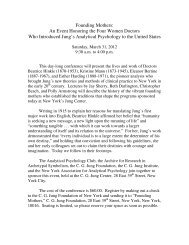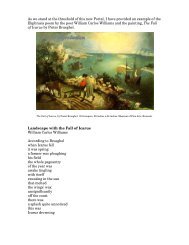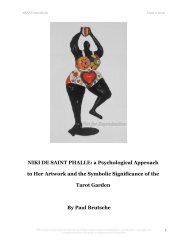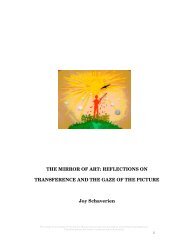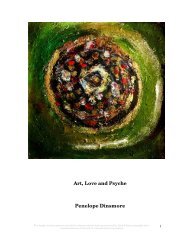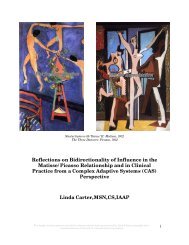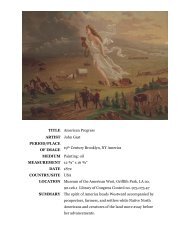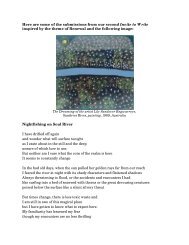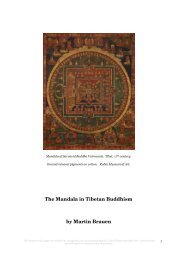Pictorial Space throughout Art History: Cézanne and ... - ARAS
Pictorial Space throughout Art History: Cézanne and ... - ARAS
Pictorial Space throughout Art History: Cézanne and ... - ARAS
You also want an ePaper? Increase the reach of your titles
YUMPU automatically turns print PDFs into web optimized ePapers that Google loves.
<strong>ARAS</strong> Connections Issue 2, 2012<br />
Individuation is common to everyone - that is why the myth of the hero's<br />
journey has universal appeal - but each of us relates to it in a different way. We<br />
imagine it as a hero's journey because it is long <strong>and</strong> hard <strong>and</strong> it takes courage. I<br />
individuate a little, for example, when I listen to a dream without imposing a<br />
preconceived interpretation, when I ask how it challenges my conscious view <strong>and</strong><br />
try to act according to its guidance.<br />
Most works of literature do not describe the hero's journey explicitly. But<br />
every work of art embodies individuation in the sense that it embodies the artist's<br />
exploration of an unconscious realm <strong>and</strong> the artist's return bearing riches which<br />
he or she shares by sharing the art. Thus one of the functions of art is to make<br />
accessible the individuation journey which, in the personality, is slow <strong>and</strong><br />
obscure.<br />
In the patients' vignettes which follow I show that pictorial space<br />
represents a visual model of individuation. While the myth of the journey models<br />
the process of individuation, pictorial space models the structural changes which<br />
are the results of individuation. We are more accustomed to describing<br />
individuation as a process, perhaps because our thinking is informed by the myth<br />
of the journey. When we look for structural changes in the personality, however,<br />
we find some that are characteristic.<br />
Winnicott has described similar structural changes though he emphasized<br />
that, under favorable conditions, these changes begin in childhood. Like Jung,<br />
Winnicott linked these changes to originality <strong>and</strong> creativity. As mentioned<br />
earlier, Winnicott said that an [individuating] personality acquires “depth” |6|,<br />
“an interior space to put beliefs in” |7|, “an inside, a space where things can be<br />
The images in this paper are strictly for educational use <strong>and</strong> are protected by United States copyright laws. 63<br />
Unauthorized use will result in criminal <strong>and</strong> civil penalties.



